Nestled in the heart of the Dolomites, Cortina d’Ampezzo transforms into a hiker’s paradise during the summer months. The winter ski resort sheds its snowy coat to reveal lush alpine meadows, jagged limestone peaks, and trails that wind through some of Italy’s most breathtaking landscapes.
Between June and September, Cortina offers perfect hiking conditions. Operating gondolas give easy access to high-altitude trails without the exhausting initial climb.
I discovered Cortina’s summer magic last year while exploring the area’s famous lakes and peaks. The contrast between vibrant green meadows and the dramatic pale mountains creates a landscape that seems almost unreal.
From the challenging via ferrata routes on Tofana di Rozes to the more gentle paths around Croda da Lago, there’s truly something for every level of adventurer.
What makes hiking in Cortina special isn’t just the trails themselves, but the complete alpine experience. After a day on the paths, you can relax in a mountain rifugio (hut) with a plate of local cuisine, watching the mountains turn golden at sunset. The area combines natural beauty with Italian hospitality in a way that keeps me coming back season after season.
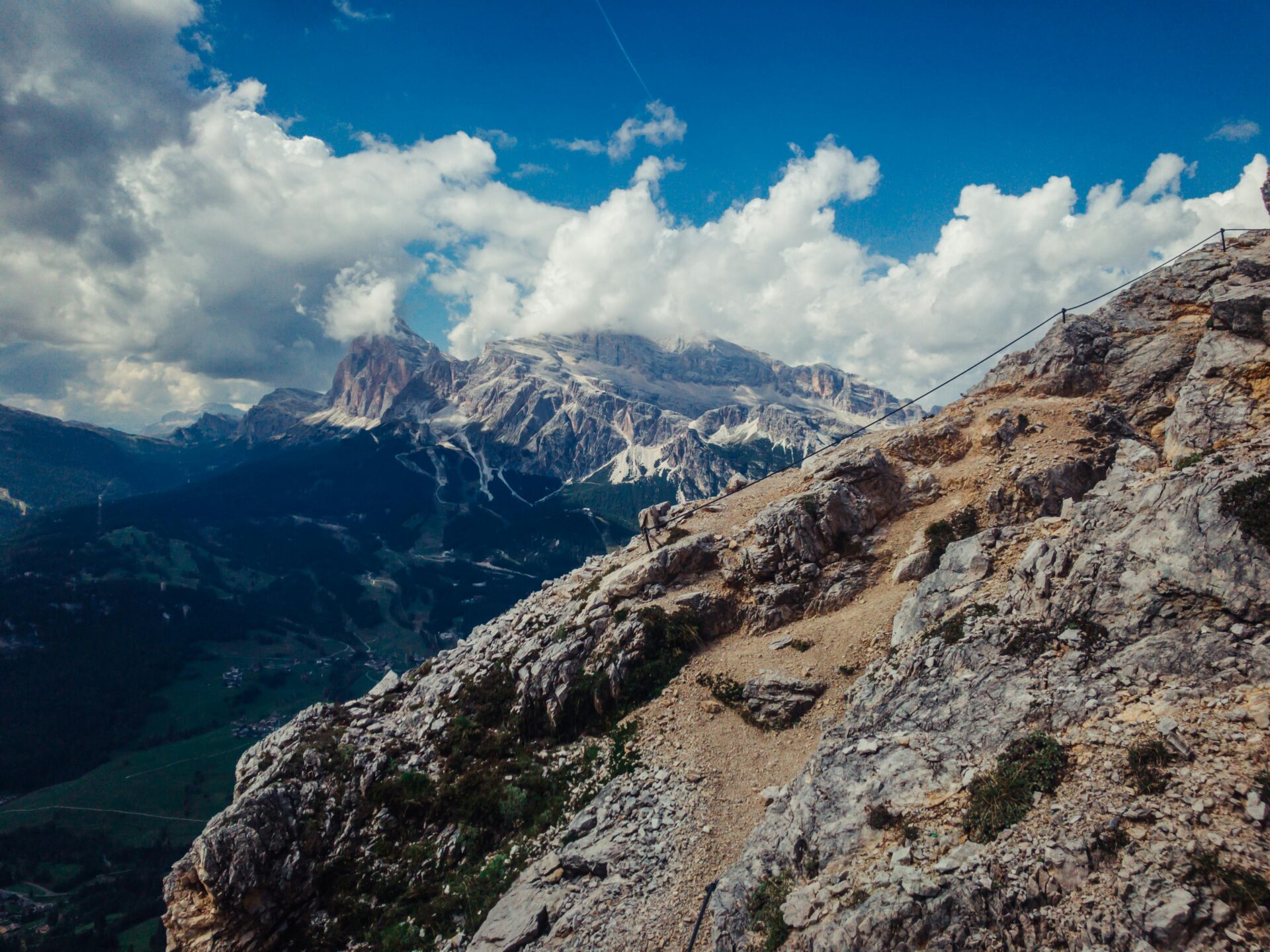
Discovering the Dolomites: Cortina’s Crown
The Dolomites form a stunning backdrop to Cortina d’Ampezzo, creating one of the most breathtaking alpine landscapes in Europe. These distinctive mountains have earned UNESCO World Heritage status for good reason.
Geology and Majesty of the Dolomite Mountains
When I first gazed upon the Dolomites surrounding Cortina, I was struck by their unique pale color. Unlike typical gray mountains, these peaks shine with a distinctive silvery-white hue that turns rose-gold at sunset—a phenomenon locals call “enrosadira.”
The mountains formed roughly 250 million years ago from ancient coral reefs. Their striking vertical walls and tower-like formations make them unlike any other mountain range I’ve explored.
Cortina sits in a wide valley encircled by these magnificent peaks, including Tofane, Cristallo, and Sorapis. The town serves as the perfect base for exploring these natural wonders with its network of well-maintained trails.
Several mountain huts (rifugios) dot the landscape, offering warm meals and shelter during long hikes. I’ve found these rustic havens perfect for refueling with authentic alpine cuisine before continuing my adventures.
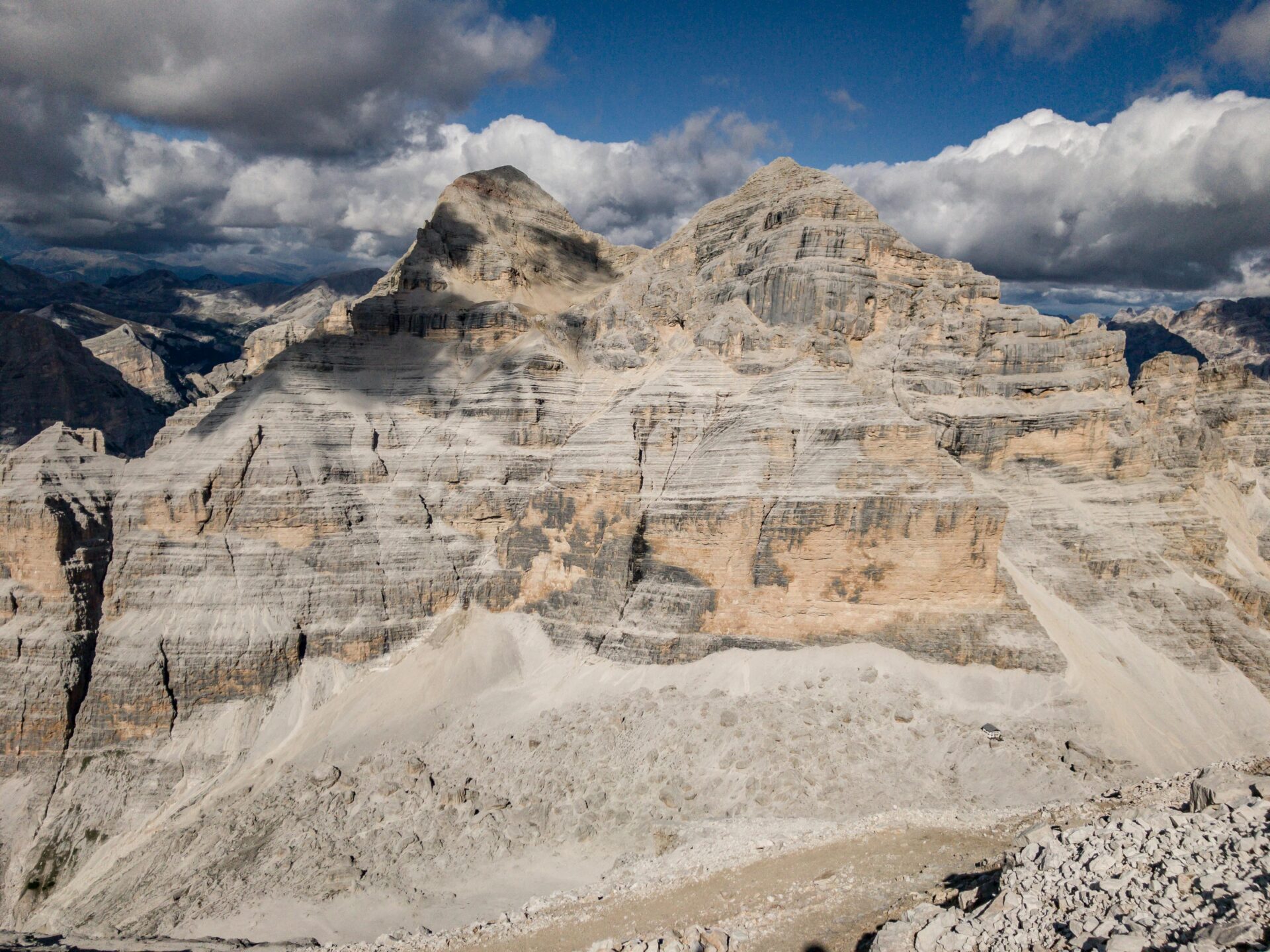
Panoramic Vistas: Tre Cime di Lavaredo
The Tre Cime di Lavaredo stands as the crown jewel of the eastern Dolomites. These three distinctive rock towers rise dramatically from alpine meadows, creating one of the most photographed mountain scenes in the world.
I recommend taking the circular hiking trail around these magnificent formations. The relatively easy 6-mile loop offers constantly changing perspectives of the towers and surrounding peaks.
The best views come at sunrise when the first light bathes the eastern faces in golden hues. I’ve spent memorable mornings watching the mountains transform as the sun climbs higher.
For the most spectacular panoramic views, climb to Forcella Lavaredo pass. From this vantage point, you can see not only the famous three peaks but also sweeping vistas of the surrounding Dolomite range stretching toward the horizon.
Several mountain huts near Tre Cime offer overnight accommodation, allowing hikers to experience both sunset and sunrise without rushing.

Cortina d’Ampezzo: A Blend of Nature and Culture
Nestled in the heart of the Dolomites, Cortina d’Ampezzo offers more than just stunning landscapes. This alpine paradise blends natural beauty with rich cultural heritage that tells the story of its unique past.
Historic Villages and Cultural Explorations
I love wandering through Cortina’s charming center, where medieval architecture meets stylish boutiques. The town’s Ladin heritage is proudly displayed in the Etnografico Regole d’Ampezzo Museum, showcasing artifacts that tell the story of the indigenous Ladin people who have called these mountains home for centuries.
During summer months, I often catch cultural festivals celebrating local traditions. The sound of Ladin language—still spoken by locals—fills the air during these events, creating an authentic mountain atmosphere.
The surrounding villages like Pocol and San Vito di Cadore offer glimpses into traditional Alpine life. These small communities maintain their historical character with wooden chalets and stone churches dating back hundreds of years.

Savoring the Tyrolean Flavors and Traditions
The cuisine here reflects Cortina’s unique position at the crossroads of Italian and Austrian cultures. I always recommend trying casunziei—red beet ravioli with poppy seeds—a local specialty that perfectly represents this cultural fusion.
Mountain refuges (rifugios) serve traditional dishes using local ingredients like wild mushrooms, game, and alpine cheeses. These cozy huts offer more than just food—they’re cultural gathering places where traditions are preserved.
Wine enthusiasts will appreciate the local Alto Adige varieties that pair perfectly with hearty mountain dishes. I’ve spent many evenings enjoying a glass of crisp Gewürztraminer while watching the alpenglow turn the Dolomite peaks pink.
Don’t miss sampling speck (smoked ham) and canederli (bread dumplings)—two Tyrolean staples that showcase the region’s Austrian influences and mountain culinary traditions.
Trailblazing the Peaks and Valleys
Hiking through Cortina’s peaks and valleys offers a breathtaking contrast between wild alpine meadows and dramatic vertical peaks. The mountain trails here cater to every experience level while showcasing the region’s incredible biodiversity.
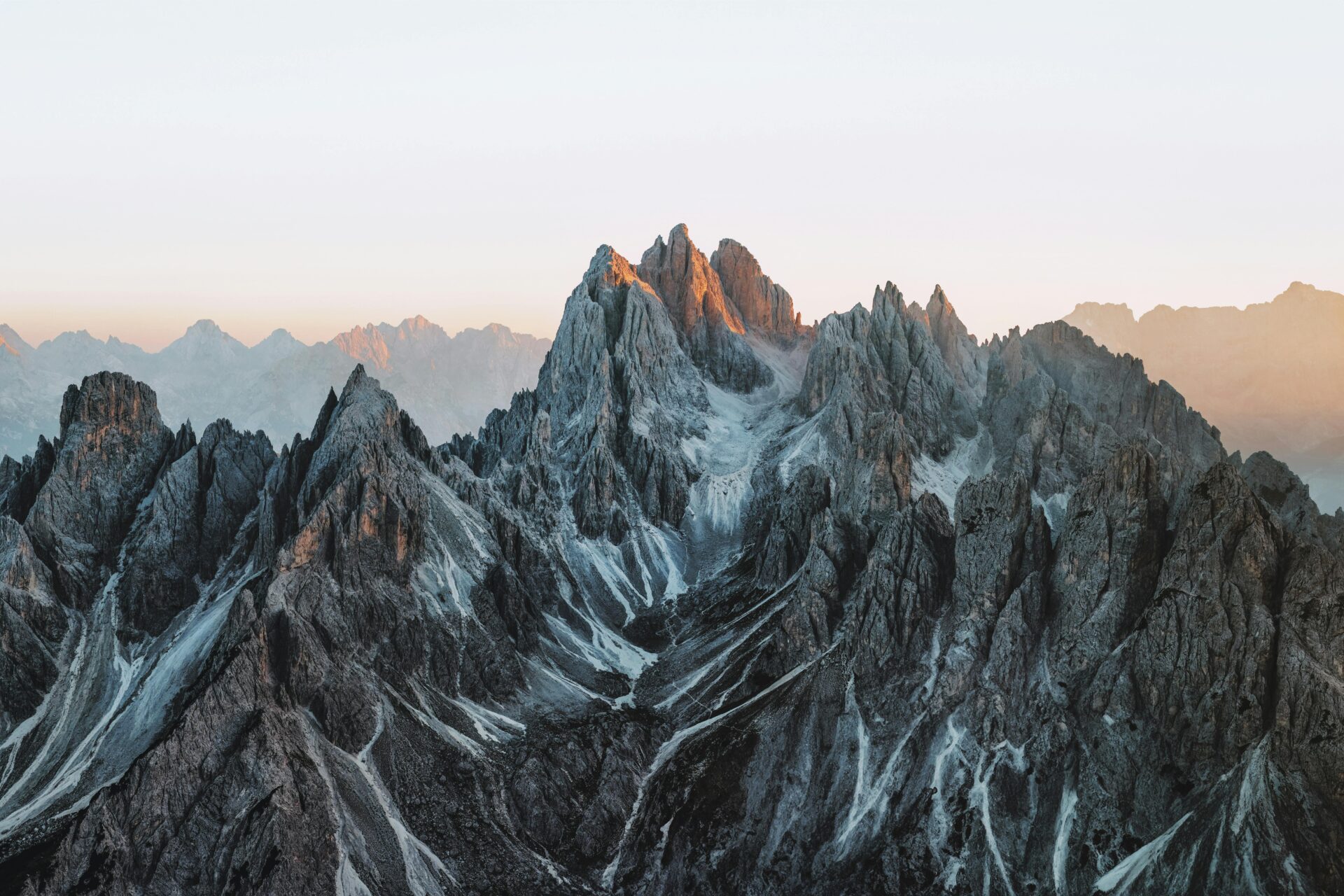
Choosing Your Trail: Routes and Circuits
When I visit Cortina d’Ampezzo, I’m always amazed by the variety of trails available. The area boasts some incredible circuit options that connect multiple passes and valleys in one satisfying journey.
For beginners, I recommend the gentle paths around Alpe di Siusi, Europe’s largest high-altitude alpine meadow. The views are spectacular without requiring technical climbing skills.
Intermediate hikers should try the Croda da Lago circuit. This beautiful trail loops around a stunning mountain lake with views that have literally stopped me in my tracks.
For experienced hikers, the challenging route to Tofana di Rozes offers both technical sections and rewarding panoramas. I always pack extra water for this one!
The trails around Lago di Sorapis reveal perhaps the most photographed turquoise waters in the Dolomites. Early morning starts help avoid the crowds on this popular route.

Flora and Fauna Along the Hiking Trails
The Dolomites’ unique limestone composition creates a perfect environment for rare alpine plants. During summer hikes, I’ve spotted colorful orchids tucked between rocks and the iconic edelweiss flower clinging to steep slopes.
July brings an explosion of wildflowers across the alpine meadows. The variety of colors can be overwhelming – purples, yellows, and blues dotting the green landscape.
Wildlife watching makes these hikes even more special. I often stop to observe marmots sunning themselves on rocks, their warning whistles echoing across valleys when they spot hikers.
The agile chamois are harder to spot but worth watching for. These mountain goat-like animals navigate seemingly impossible cliff faces with ease.
Bird enthusiasts should bring binoculars! Alpine choughs, golden eagles, and various songbirds add melodies to the mountain scenery as you traverse these magnificent trails.
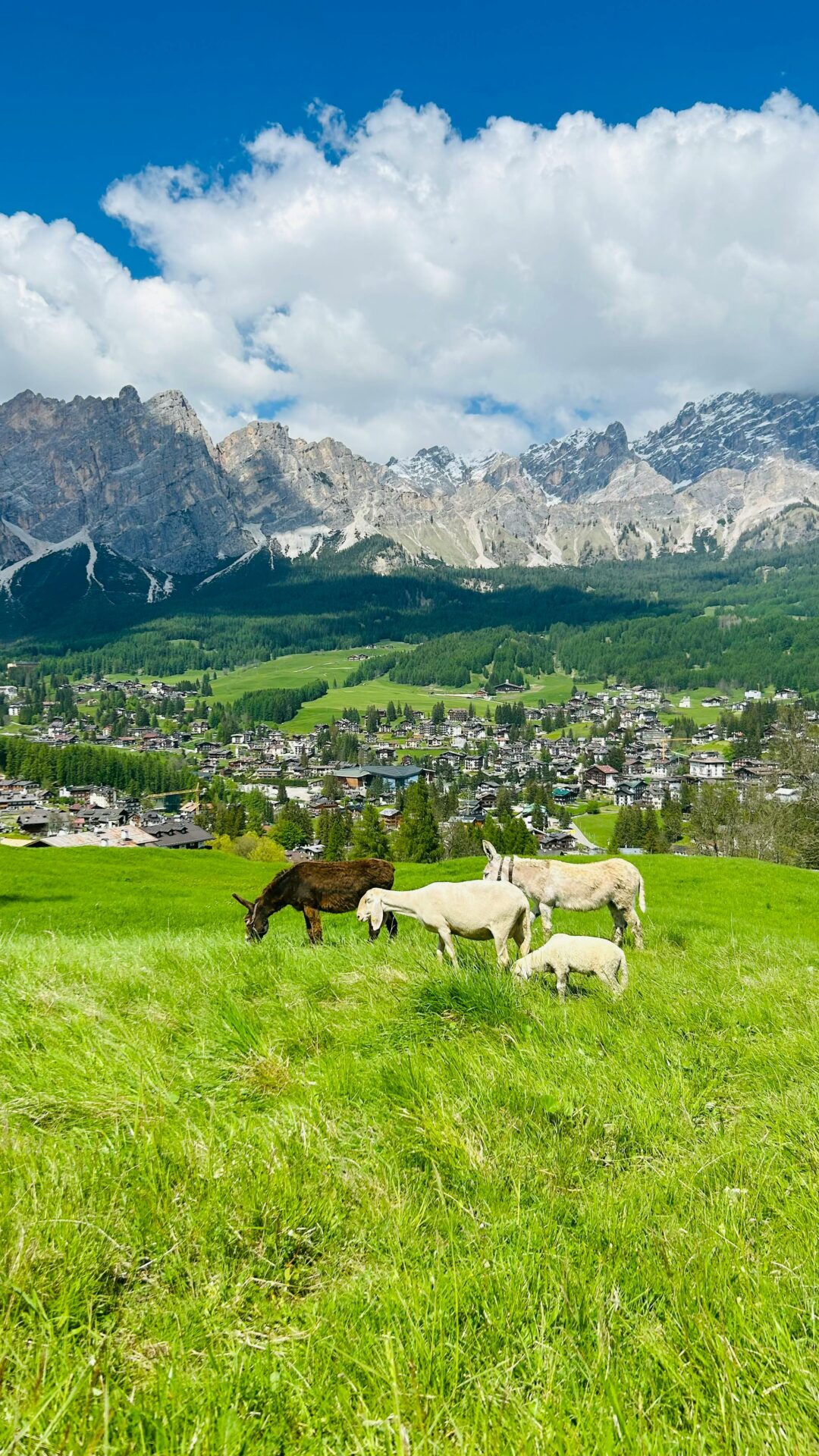
Accommodation and Logistics
Planning where to stay and how to get around is crucial for a successful hiking trip in the Dolomites. The Cortina area offers diverse accommodation options, from luxurious hotels in town to rustic mountain refuges perched among the peaks.
Staying in Mountain Refuges and Hotels
I’ve found that mountain refuges (rifugios) provide the most authentic Dolomites experience. These cozy huts offer basic but comfortable accommodation with stunning panoramic views you simply can’t get in town. Many refuges along the Alta Via routes, like Rifugio Lagazuoi and Rifugio Nuvolau, serve delicious homemade meals featuring local specialties.
For those preferring more comfort, Cortina d’Ampezzo has excellent hotels for every budget. I particularly recommend Hotel Natale and Hotel Tofana for their hiker-friendly amenities and convenient locations. Many hotels offer packed lunches and hiking information.
The nearby villages of Ortisei in Val Gardena and Corvara in Alta Badia also make great bases for exploring different parts of the Dolomites. These charming towns offer a mix of traditional Alpine charm and modern comforts.

Traveling to Cortina: Transportation Tips
Getting to Cortina requires some planning, but it’s definitely worth the effort. The closest major airports are Venice Marco Polo and Innsbruck, with transfer times of 2-3 hours by car or shuttle.
Public buses connect Cortina to major cities and nearby hiking areas, though schedules can be limited in shoulder seasons. I recommend booking tickets in advance during summer months.
Renting a car gives the most flexibility for exploring the region. The mountain roads are well-maintained but winding, so allow extra travel time. Many hotels offer free parking.
Once in Cortina, local shuttle buses serve popular trailheads during summer. Some hikes can be accessed directly from town, while others might require a short drive or bus ride to reach the starting point.
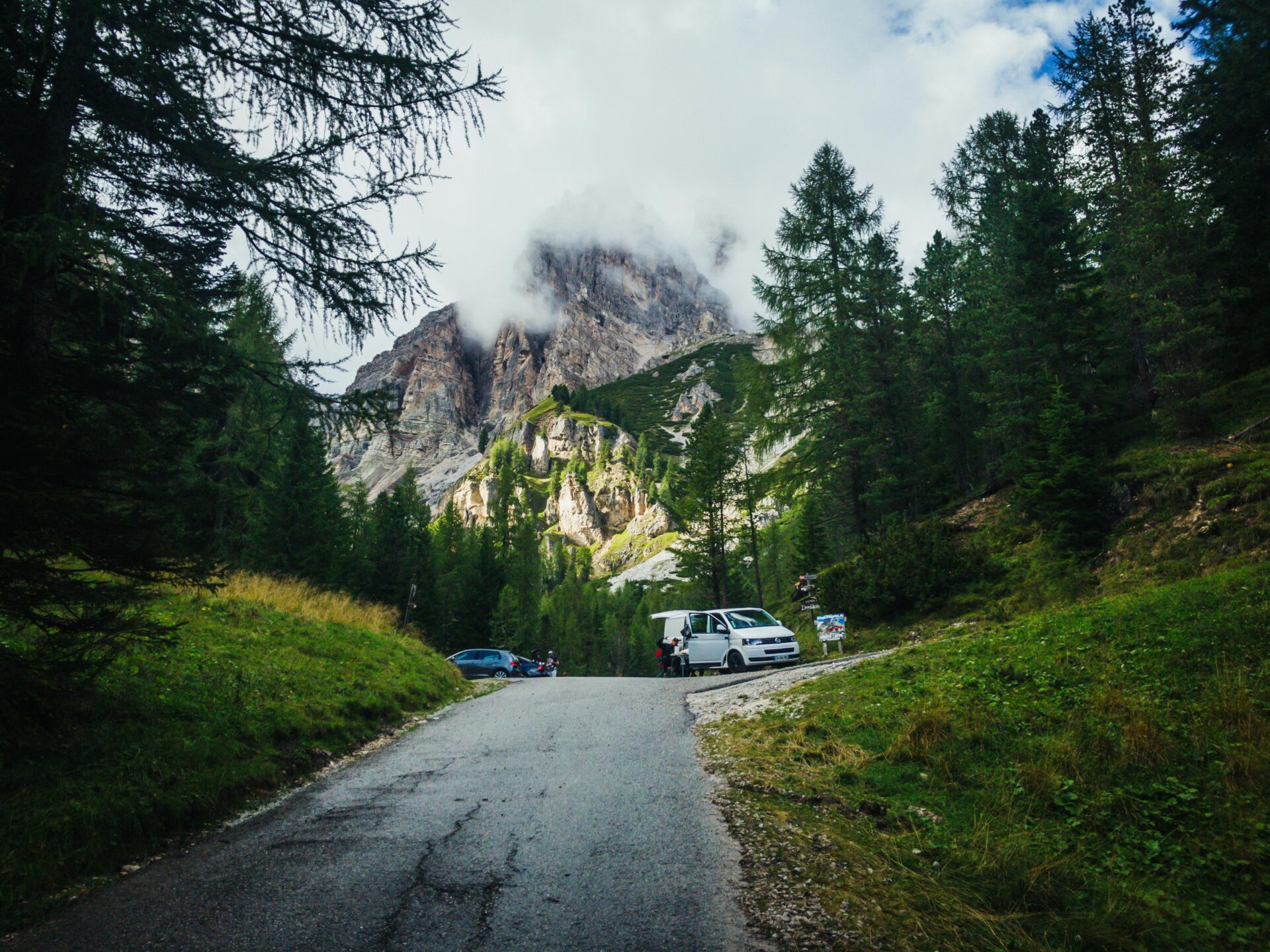
Beyond Hiking: Summer Activities in Cortina
Cortina d’Ampezzo transforms into an adventure playground during summer months, offering far more than just hiking trails. The region’s dramatic landscape provides the perfect backdrop for thrilling activities both on land and water.
From Lakes to Peaks: Cycling, Via Ferrata, and More
I found cycling around Cortina to be one of the most rewarding ways to explore the area. The winding roads offer stunning views of the Dolomites at every turn. You can rent bikes in town and tackle routes ranging from leisurely valley rides to challenging mountain passes.
Via ferrata, or “iron path,” is another must-try experience. These protected climbing routes feature steel cables, ladders, and bridges fixed to the rock. As a beginner, I started with the easier routes like Via Ferrata Averau, while more experienced climbers might enjoy the challenging Ivano Dibona.
The lakes around Cortina are perfect for a refreshing break. Lago di Braies, with its emerald waters, is worth the short drive. I spent a peaceful afternoon rowing across its crystal-clear surface, surrounded by towering mountains.
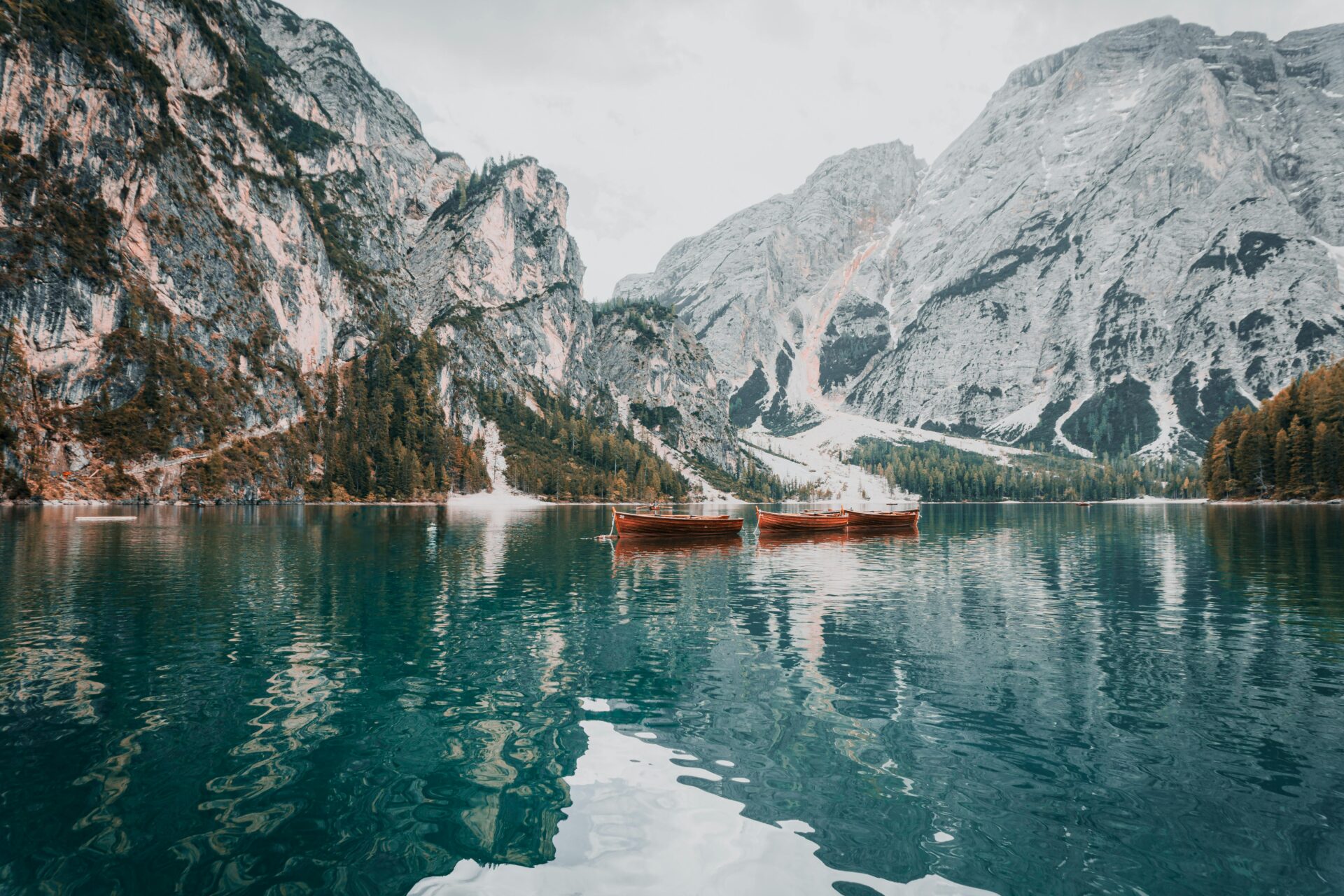
Alpine Adventure: Climbing, Mountain Biking, and Skiing
Mountain biking in Cortina offers trails for all skill levels. The Dolomiti Bike Park features well-maintained routes with breathtaking scenery. Many lifts operate during summer, making uphill sections much easier!
Rock climbing enthusiasts will find paradise here with hundreds of routes on the limestone walls. Local guides can help you discover the best spots based on your experience level.
The Marmolada Glacier offers summer skiing until early July. It was a unique experience I’ll never forget.
Scenic drives are perfect for less active days. The Great Dolomites Road winds through mountain passes and valleys, showcasing the region’s stunning beauty. I recommend stopping at Lago di Carezza, known for its rainbow colors reflecting in the water.


